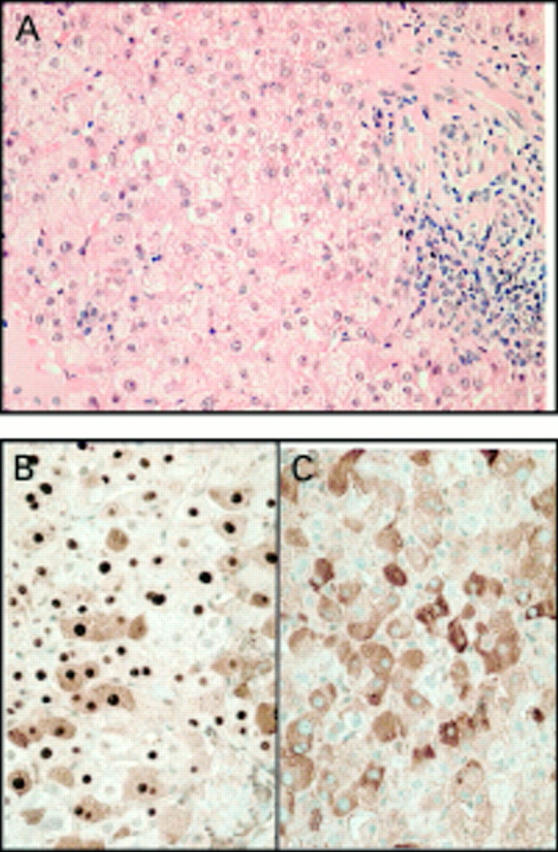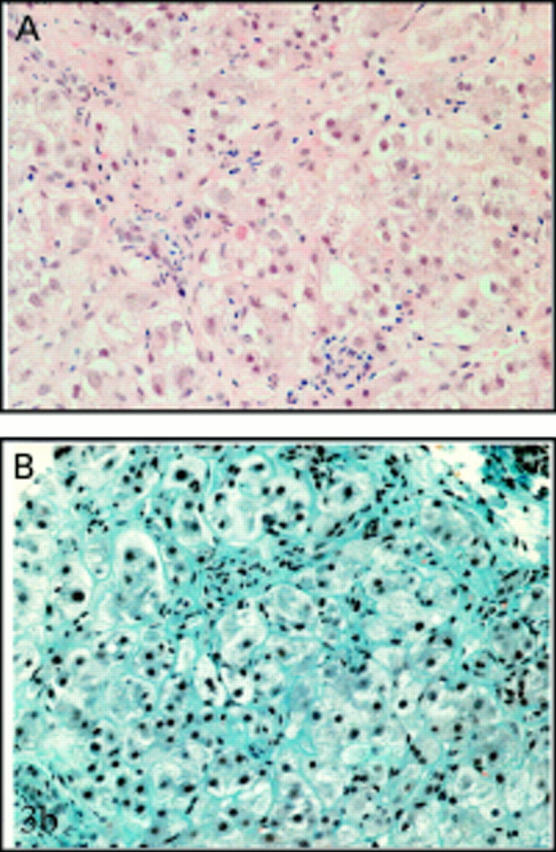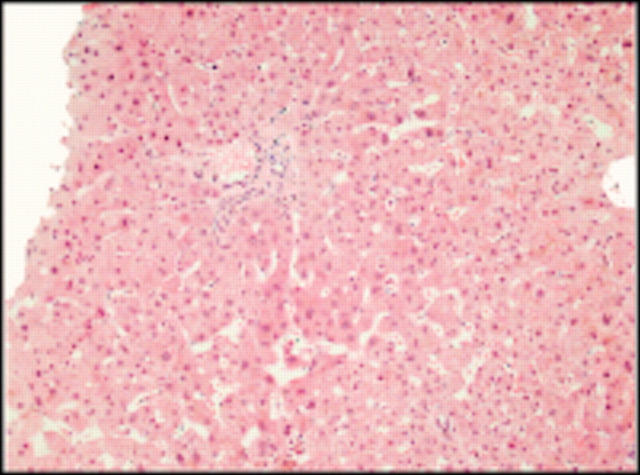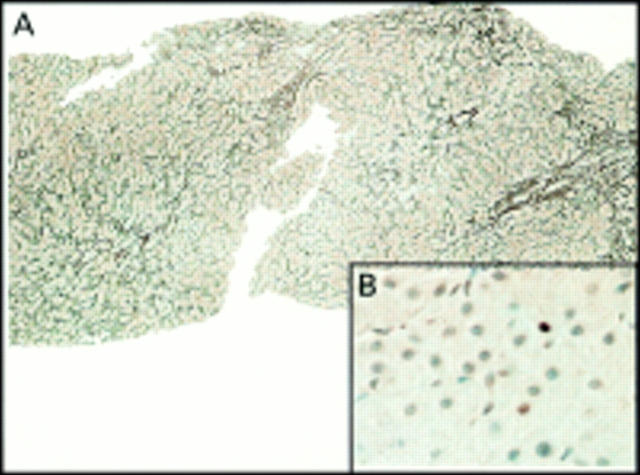Abstract
Fibrosing cholestatic hepatitis (FCH) is a severe clinical and histological variant of hepatitis B virus (HBV) infection seen most commonly in the HBV infected allograft after liver transplantation. Without treatment, FCH is fatal, rapidly and universally. Remission has been reported with lamivudine but is associated with evolving resistance to lamivudine. Adefovir dipivoxil has recently been reported to be a potent and highly effective inhibitor of HBV replication in both wild-type and lamivudine resistant HBV infection. We report a case of FCH 15 months after liver transplantation for HBV related cirrhosis despite therapy with lamivudine and hepatitis B immunoglobulin (HBIg). Within two weeks of commencing treatment with adefovir dipivoxil 10 mg once daily, the patient had made a remarkable recovery with resolution of jaundice and normalisation of liver biochemistry. HBV DNA and hepatitis B e antigen were lost from serum subsequently and liver histology had improved at four months. This case report suggests firstly, that advanced FCH can be reversed and secondly, that addition of adefovir dipivoxil to lamivudine and HBIg may be an effective antiviral strategy. Keywords: hepatitis B virus; fibrosing cholestatic hepatitis; adefovir dipivoxil; liver transplantation
Full Text
The Full Text of this article is available as a PDF (177.1 KB).
Figure 1 .
Liver biopsy on day 56 after transplantation, showing minimal portal inflammation without fibrosis.
Figure 2 .

(A) Liver biopsy at 10 months after transplantation showing progression to stage 2 fibrosis. (B, C) Liver immunohistochemistry 10 months post-transplant demonstrating that 30% of hepatocytes had strong nuclear and cytoplasmic staining for hepatitis B core antigen (B) while 50% of hepatocytes stained positively for hepatitis B surface antigen.
Figure 3 .

(A, B) Liver biopsy at 15 months post-transplant showing fibrosing cholestatic hepatitis.
Figure 4 .
(A) Liver biopsy at day 102 after commencing adefovir dipivoxil 10 mg daily showing complete resolution of cholestasis, a marked decrease in inflammation, and regression of fibrosis (stage 2). (B) Liver immunohistochemistry at day 102 after commencing adefovir dipivoxil 10 mg daily demonstrating negative staining for hepatitis B surface antigen while hepatitis B core antigen was found in occasional hepatocyte nuclei but not in the cytoplasm.




